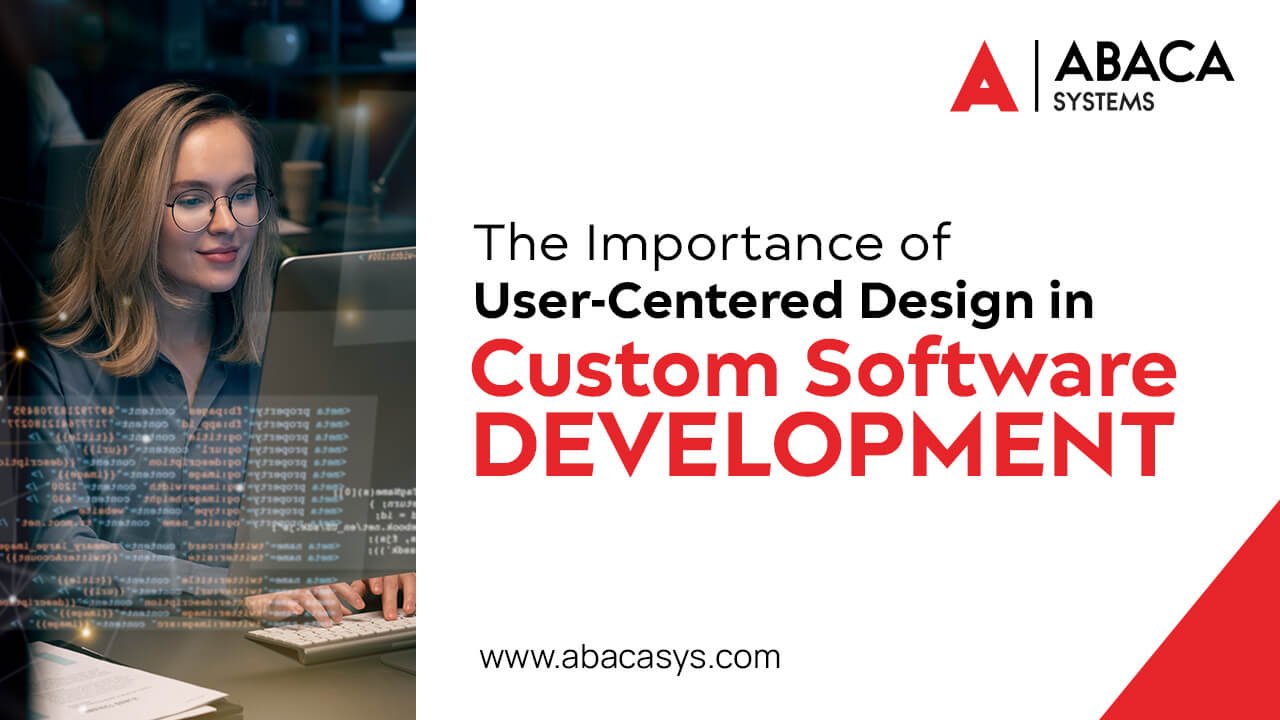The Importance of User-Centered Design in Custom Software Development

Without a dilemma, user-centered design is integral to any modern custom software development company. Customer experience can make or break a business in today’s cut-throat competitive world. Further, regardless of industry, customer experience impacts the entire supply chain. In this blog post, we will introduce you to user-centered design, its importance, best practice, common pitfalls to avoid, and more.
So, let’s scroll down and find out:
What is User-Centered Design?
User-centered design (UCD) is a human-centered design methodology that considers the wants and motivations of technology users. It is a method for designing the user experience that emphasizes knowledge of human requirements and technological capabilities. UCD aims to increase a system or product’s overall usability by incorporating this knowledge into the design process at every level.
Don Norman first used the term “user-centered” in the early 1980s to emphasize the significance of considering users’ behavior while designing software. According to Norman, software developers will only be able to comprehend how their products will be used if they pay attention to specific people, which will make it challenging for them to create valuable products.
The Importance of User-Centered Design in Custom Software Development Company
User-centered design has become a popular methodology for designing software products that cater to the needs and wants of users. In custom software development, UCD can provide significant benefits that can create valuable products that meet user needs and expectations.
Here are five key benefits of using UCD for custom software development company:
- Improved User Experience: UCD places the user at the centre of the design process, ensuring that the software product meets their specific needs and requirements. This approach helps to improve the user experience by providing a product that is intuitive, easy to use, and addresses the user’s pain points. This leads to higher user satisfaction and better adoption rates.
- Reduced Development Costs: Incorporating UCD in the design process can help identify issues and challenges early on, which can reduce the development cost by preventing costly rework or redesign. By better understanding user requirements, developers can make more informed decisions that result in a more efficient development process.
- Increased Productivity: UCD allows developers to focus on creating software specifically tailored to the user’s needs. This approach can increase productivity by reducing the time and resources required to develop a product unsuitable for its purpose. By designing with the user in mind, developers can ensure that the software meets the user’s needs, which results in more productive users.
- Better Customer Satisfaction: By focusing on the user and their needs, UCD helps create products more aligned with the customer’s requirements. This approach can increase customer satisfaction and loyalty, as users are likely to stick with products that meet their needs and expectations.
- Increased Competitive Advantage: Custom software designed using UCD is more likely to stand out. By creating a product tailored to the user’s needs, custom software development companies can differentiate themselves from competitors and position themselves as leaders in the industry. This can increase market share, revenue growth, and a more substantial brand reputation.
Best Practices for User-Centered Design in Custom Software Development
User-centered design is the process of creating software that meets users’ needs. This approach focuses on understanding how the user will use your product and why they need to use it. User-centered design is often used in custom software development, where you build a new application from scratch.
The following five best practices will help you create better applications with user-centered design:
- Ask users why they need your product. What do they want? What problems will your solution solve for them? What features can you build that will make their lives easier?
- Look at the problem from a different perspective. When designing an application, consider how people might use it in different situations or environments. For example, if you’re building a mobile app, consider how people would interact with it while using public transportation or while on vacation at a resort hotel.
- Use prototyping tools to test ideas quickly and cheaply before spending too much time on them. Try several designs until you find one that feels right for the problem.
- Please pay attention to detail when designing UCD approaches into your interfaces so that users know exactly what’s expected of them and how the software will interpret their actions.
- Consider using a mix of human- and computer-driven UCD methods. Humans can provide context for complex tasks or problems, but computers have speed, accuracy, and consistency advantages.
Common Pitfalls to Avoid in User-Centered Design
1. Not Including End Users in the Process
The best designs come from the people who will use them. That’s why user-centered design is so important. It allows you to get feedback from your users about what they want, how they use your product, and what could be better. But one of the most prominent pitfalls designers fall into is not including end users in the process. They might have great ideas for features or functionality, but they might need to realize how hard it is to implement those changes once they become part of the product. So when you’re designing a new feature or interface, make sure that you include a user who has used it before so that you can learn what works and what doesn’t work well for them.
2. Making Unfounded Assumptions
Another common pitfall of user-centered design is making assumptions about how your users will use your product without getting any real feedback first-hand from them. For example, if you’re creating an iPad app and think that all your users will want to play games on their iPads, then you might assume that most of them will be familiar with touchscreen controls and accessing menus through swipe gestures instead of traditional click controls like mouse clicks.
3. Ignoring Context
Context is critical to understanding your users and their needs. It’s essential to understand not only the current state of your product but also its future state, including any planned features or changes that may impact users. This requires a deep understanding of your user base and their needs. If you’re building a new product, this is especially important because you can’t assume that what you’ve built will be satisfactory for everyone in the future — it’s likely to change over time as the market evolves or even if the company itself changes hands or becomes acquired by another company. You should always consider how your product will change over time and what needs to happen before it reaches its final form.
4. Lacking a Clear Vision or Purpose for the product
This is the biggest pitfall to avoid in user-centered design. If you have a clear vision for your product, it will be easier to build and maintain it once you’ve launched it. Your users will also have yet to learn why they’re using your app or why they should use it.
The best way to avoid this problem is to start by defining your product’s purpose and vision early in creating your app’s features. This will help you think about how your product fits into the world and how it can benefit people who use it.
Let’s Wind Up
Abaca Systems is an innovation-driven custom software development company. We offer tailored web solutions and mobile applications customized to align with your business requirements. Our panel of dedicated professionals has a proven track record of delivering upon the expectations of our clients. We are experts in developing custom software for all business solutions, including CRM, ERP, etc. Our solutions are user-friendly and will help you save time and money. If you are seeking to enhance the functionality of your product with a powerful set of features, then you can hire our team to develop an innovative solution.
